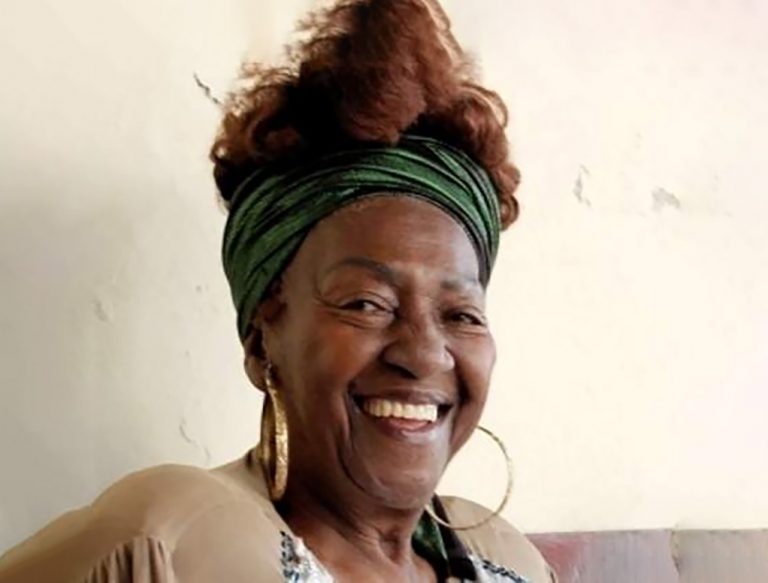By Caridad Gónzalez Edwards
Any generation of Camagüey’s inhabitants know who Candita Batista is. And look, I say who she is, because it is impossible not to keep her in mind as if she were alive, present, still walking through her beautiful city.
We know, without specifying dates, that she was the first woman from Camaguey to sing with an orchestra, endorsed by musicians of the stature of Adolfo Guzmán, Rafael Somavilla, Aida Diestro, Jesús Ortega, Isolina Carrillo, Fernando Mulens, José Ramón Urbay, Armando and Mario Romeu.
She worked on the radio and in different spaces of popular dances, theater magazines and companies. She was applauded in twenty nations on three continents, in which she brought the Cuban language of our music.
An unmatched trajectory
In her brilliant artistic career, she had the opportunity to share the scene and meet multiple figures of great international prestige, of which I will only mention Nat King Cole, Artie Show, Dixie Gillespie, Juan Carlos Medeles and Estrellita Castro; with whom she toured all the Spanish communities for a year.
During this tour, the incomparable Andalusian artist Lola Flores enjoyed the performances from a box at the Victoria Theater in Barcelona. She would also share at the Olimpia Theater in Paris with consecrated figures such as Maurice Chevalier, La Mistinget, Josefhine Baker and Charles Aznavor.
I never heard her glorifying herself for her past achievements, which, in fact, were and are today the glories of all, I never heard a no from her, not even a pained face, when it came to delivering her art.
From my experience
It was 1996, I was very young and I was starting in the Maraguán Artistic Group. In one of her staging, a fragment of Negro Simón was being done, which was in Candita’s repertoire. Without the experience, without the listening, I only had left to visit her and ask her to correct my melodic line and interpretation. What was my surprise? first the reception, then without flinching, she sang it and made me sing it with her. In that way we worked on it, so natural, spontaneous, and talkative, that the meeting made us close.
Then, as time passed, in 2002 a documentary was made for her, in which I had the privilege of working on the soundtrack, with another musician, adoptive son of Camagüey: Juan Enrique Carballo, who at that time directed the traditional group “Tiempo de son ”, which she classified as the best in Cuba at the time …
That responsibility of bringing to a traditional format, some of the works that she had popularized and launched to stardom with the sound of a Jazz band orchestra, was very difficult but more than gratifying. Having her close by in rehearsals, preparing herself, majestic and demanding, without losing her sweetness and femininity, seeing her sing, dance, enjoy behind the scenes was a privilege.
We keep counting
Another experience was on the second floor of the Teatro Principal enjoying a concert by the great Rosita Fornés when, amid applause, covering the light of the follower, she said: … they told me that here was my darling black … Candita please … and then, almost Embarrassed, she stood up and greeted the audience.
She was in the center box and each one revered the other. It was really wonderful between applause and exclamations, to see and feel how much humility embraced both figures of incalculable value in the heritage of Cuban music.
Her work…
She founded Mokekeré, “her group or my boys” she would tell them; and she defended them from any inconvenience or misunderstanding at work or personal, as a jealous mother of all. She kept her peñas in “La Casa de la Trova” and for many years, the patio of his house, “El Rincón de Candita y Filo”, was a source of inspiration and a place where troubadours, other musicians, poets and a population in love with her contralto voice shared, that upon passing away; it was still clear, powerful, and hopeful.
Her tireless love for art did not allow her to rest how some of us think she deserved for so many years of dedication and she continued with more than 90 years on the tables.
The black vedette of Cuba died at the age of 99, the one who returned proud to her land and did not want to make history once she arrived outside it, a strong and temperamental interpreter of Afro sones, proclamations and songs, a jealous caretaker of Camagüey authors. That is why she always had in her repertoire, Angelitos Negros, the text could be seen as a provocation; but she interpreted it with the sweetness and temperament that characterized her.
…… Painter, if you paint with love… because you despise their color, if you know that, in heaven, God also wants them …… even if the virgin is white, paint a little black angel, that they also go to heaven…
……I know you are there…
I remember someone wrote:… Thank you, Candita, friend, for your generosity, for the consacration of a life dedicated with love to rise above racial and gender prejudices, and make the culture of your country shine, beyond the borders of the homeland…
…Beautiful…
I remember you my “negrita”, as you told me … always … and today, dedicating this article to you.
Her legacy
Defender of her roots from the repertoire, to the stance on stage, her cadence when walking, the way she dresses with turbans until death and wide dresses of bright colors, her wide smile without fear of scandal, her behavior, her way of always receiving us calm, elegant, fragrant, tender, kind, with a sincere and deep look, makes me catalog her, in my opinion; as the living picture of black beauty, of the delicacy of the Afro-descendant woman in my Camagüey.






